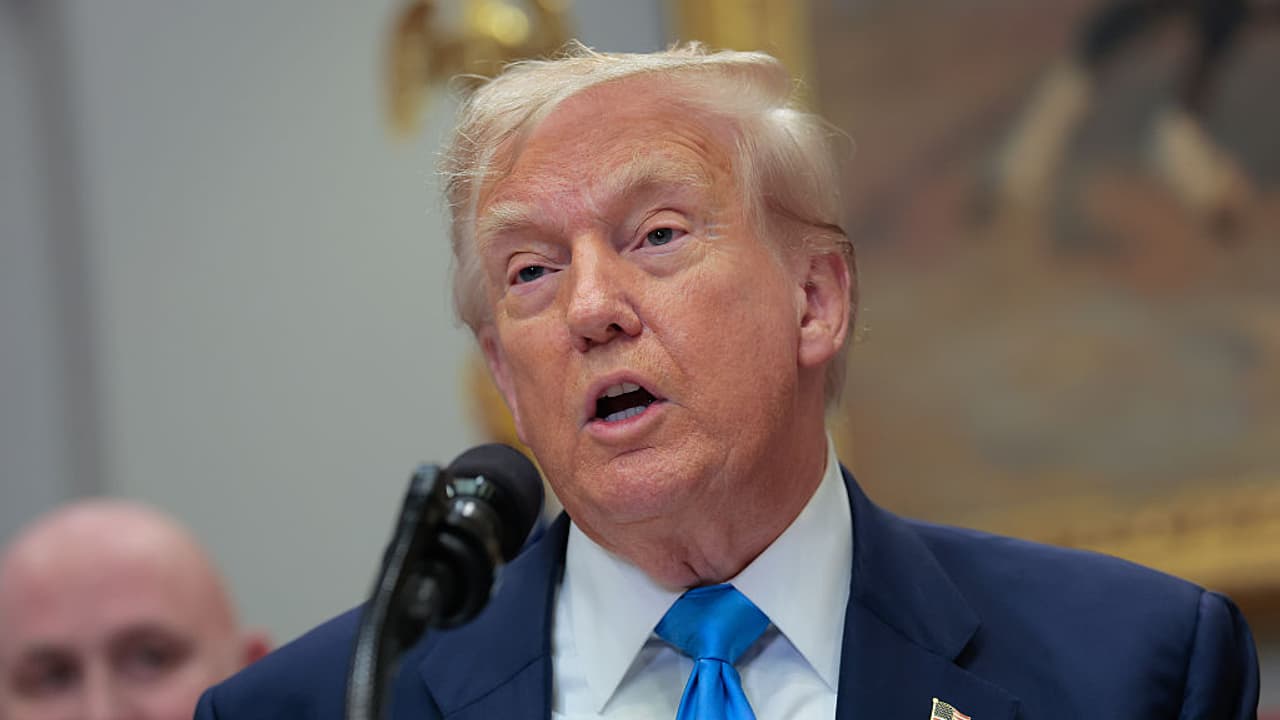India delivers its strongest rebuke yet to the US and EU over Russian oil criticism after Trump announces steep tariffs, calling the targeting “unjustified and unreasonable.”
India on Monday issued a sharply worded response after US President Donald Trump accused New Delhi of profiting off cheap Russian oil and announced plans to “substantially” raise tariffs on Indian goods. Terming the move unfair and based on misplaced allegations, India made its firmest statement yet on what it sees as selective and hypocritical targeting by both the United States and the European Union.
“India has been targeted by the United States and the European Union for importing oil from Russia after the commencement of the Ukraine conflict,” the Ministry of External Affairs (MEA) said. “In fact, India began importing from Russia because traditional supplies were diverted to Europe after the outbreak of the conflict. The United States at that time actively encouraged such imports by India for strengthening global energy markets stability.”
Subscribe
The remarks follow the Trump administration’s recent decision to slap a 25% duty on all Indian goods — part of a broader revision of reciprocal tariffs on over 60 countries. While the executive order made no explicit mention of penalties for India’s oil purchases, Trump’s social media posts left no doubt that India’s growing ties with Russia are now at the center of a brewing trade clash.
India’s Energy Strategy: A Matter of Necessity, Not Choice
India stressed that its decision to buy oil from Russia is driven by practical concerns — energy affordability and supply security for a growing population — and not by ideology or politics.
“India’s imports are meant to ensure predictable and affordable energy costs to the Indian consumer. They are a necessity compelled by global market situation,” the MEA said.
What particularly rankled New Delhi is that the same nations criticising India for buying Russian oil have themselves continued doing significant business with Moscow — often in areas beyond vital needs.
“However, it is revealing that the very nations criticizing India are themselves indulging in trade with Russia. Unlike our case, such trade is not even a vital national compulsion.”
Europe’s Record Trade With Russia Exposed
In a data-driven counterattack, the Indian government laid bare the extent of Europe’s ongoing trade with Russia. Despite public rhetoric against Moscow, the numbers suggest otherwise.
“The European Union in 2024 had a bilateral trade of Euro 67.5 billion in goods with Russia. In addition, it had trade in services estimated at Euro 17.2 billion in 2023. This is significantly more than India’s total trade with Russia that year or subsequently,” the statement noted. “European imports of LNG in 2024, in fact, reached a record 16.5mn tonnes, surpassing the last record of 15.21mn tonnes in 2022.”
The trade isn’t limited to energy either. India pointed out that Europe continues to engage with Russia across sectors such as fertilizers, mining, machinery, and chemicals. “Europe-Russia trade includes not just energy, but also fertilizers, mining products, chemicals, iron and steel and machinery and transport equipment.”
Scroll to load tweet…
US Also Maintains Key Imports From Russia
India also called out Washington’s continued reliance on Russian imports for key industries, even as it intensifies criticism of New Delhi.
“Where the United States is concerned, it continues to import from Russia uranium hexafluoride for its nuclear industry, palladium for its EV industry, fertilizers as well as chemicals.”
This context, India argues, makes the current targeting by the US and EU both “hypocritical” and harmful to bilateral trust.
“In this background, the targeting of India is unjustified and unreasonable. Like any major economy, India will take all necessary measures to safeguard its national interests and economic security.”
Tariff Threat Tied to Trade Deal Pressure
The Trump administration’s sharp rhetoric is being seen in New Delhi as part of a broader pressure campaign ahead of the next round of trade negotiations scheduled later this month. Trump has also repeatedly raised concerns about India’s tariff regime, calling it “among the highest in the world.”
The US is seeking major concessions in agriculture, dairy, and genetically modified (GM) foods — sectors where India remains firm due to concerns about food security and the livelihoods of millions of small farmers. Talks have so far seen five rounds of discussions, with the next session set for August 25 to 29 in New Delhi.
Despite rising tensions, India says it is committed to a “fair, balanced and mutually beneficial trade agreement” and is reviewing the implications of the new tariff measures.
India’s Growing Energy Ties With Russia
Before the Ukraine war, Russia accounted for just 0.2% of India’s total oil imports. That changed dramatically after 2022, when many Western buyers stopped purchasing Russian crude, triggering supply shifts and discounts.
By July 2025, Russia supplied 36% of India’s total crude oil imports, making it India’s largest energy partner. New Delhi’s strategy was simple: buy cheap, diversify suppliers, and stabilise domestic prices.
India, the world’s third-largest crude importer after China and the US, argued that its decisions were pragmatic — not political.
Bilateral Trade Snapshot: India and US
The US remains India’s top trading partner, and bilateral economic ties have continued to expand in recent years. In 2024–25:
- Total bilateral trade: USD 186 billion
- Indian goods exports: USD 86.5 billion
- Indian goods imports: USD 45.3 billion
- Services exports: USD 28.7 billion
- Services imports: USD 25.5 billion
- Overall trade surplus in India’s favour: USD 44.4 billion
India’s top exports to the US include pharmaceuticals, telecom equipment, petroleum products, garments, and jewellery, while imports are led by crude oil, aircraft parts, coal, and electronics.
